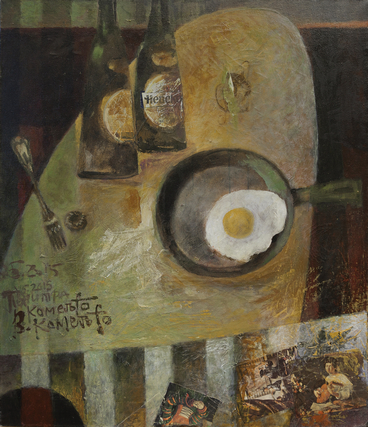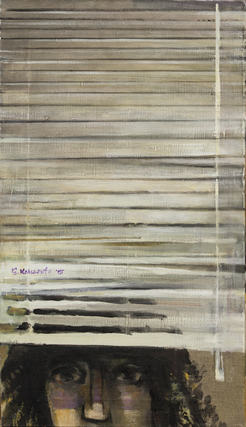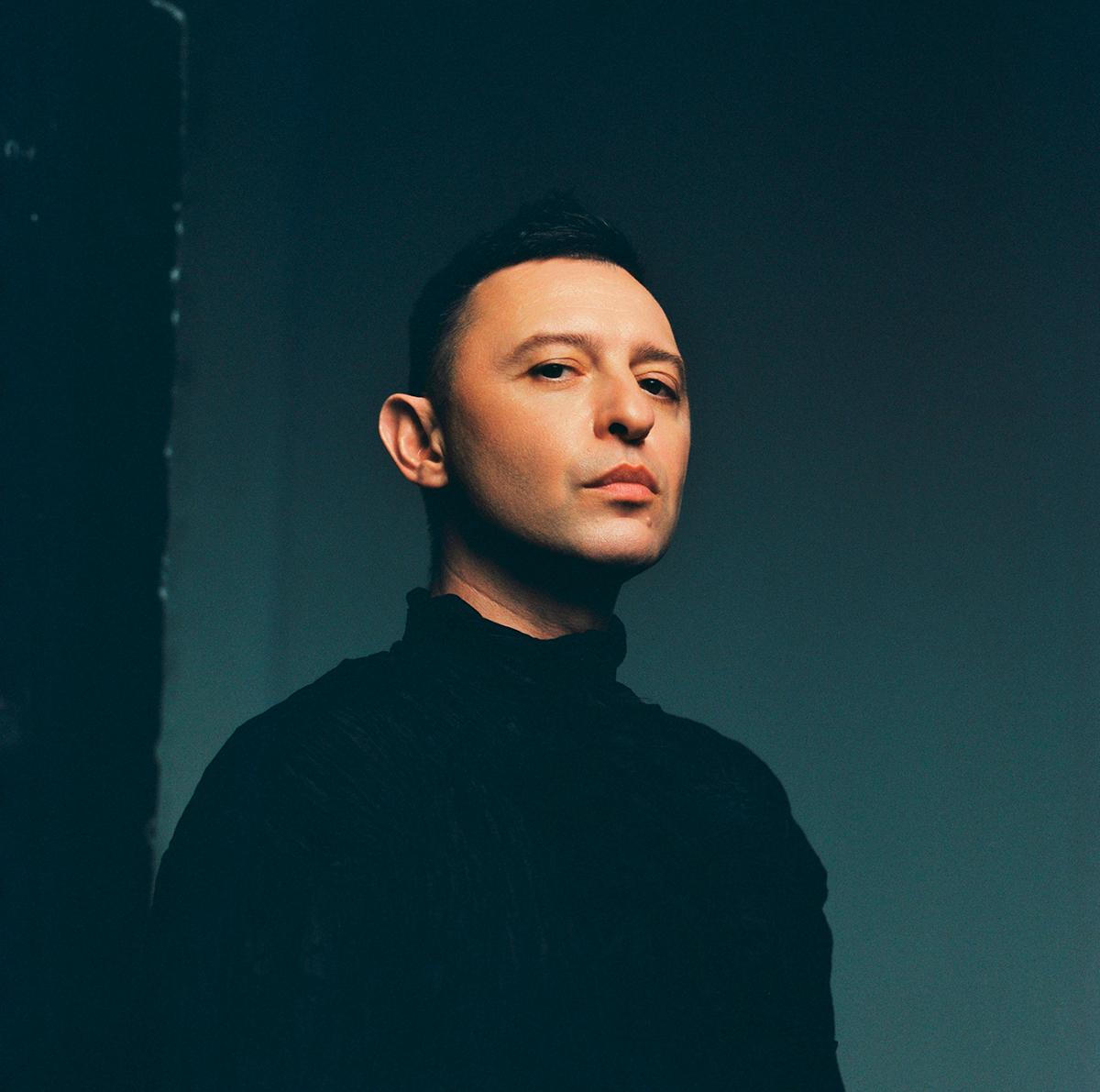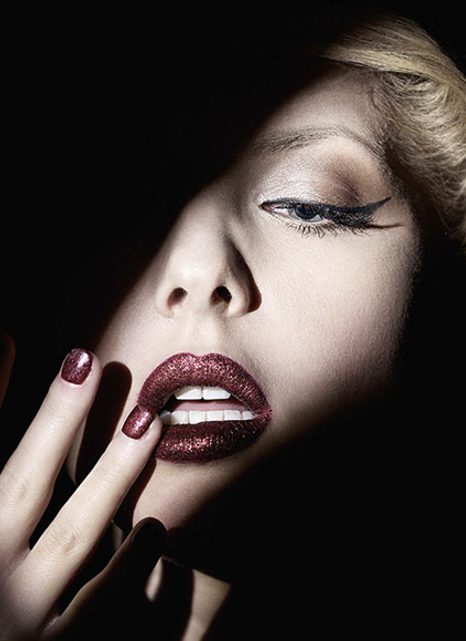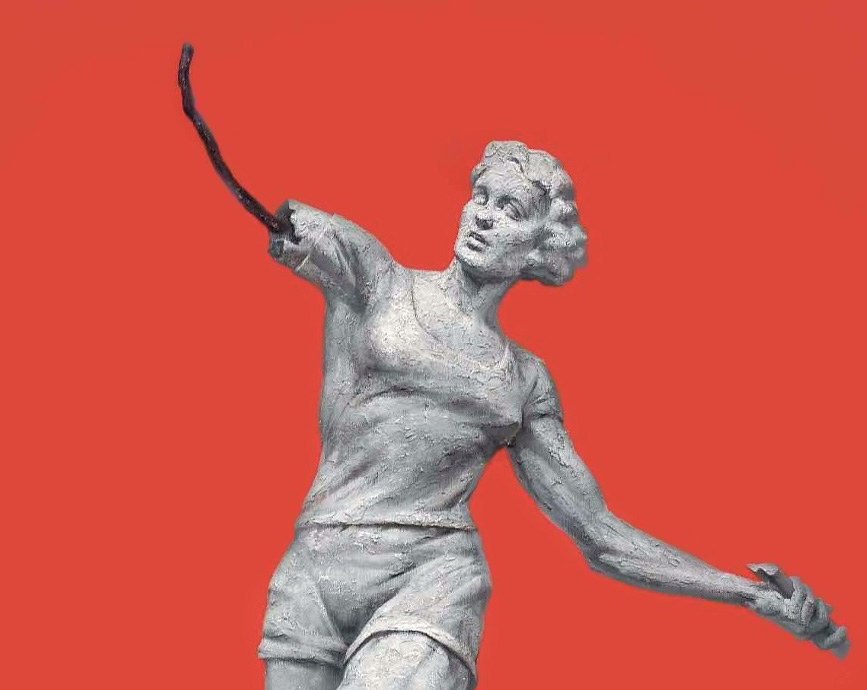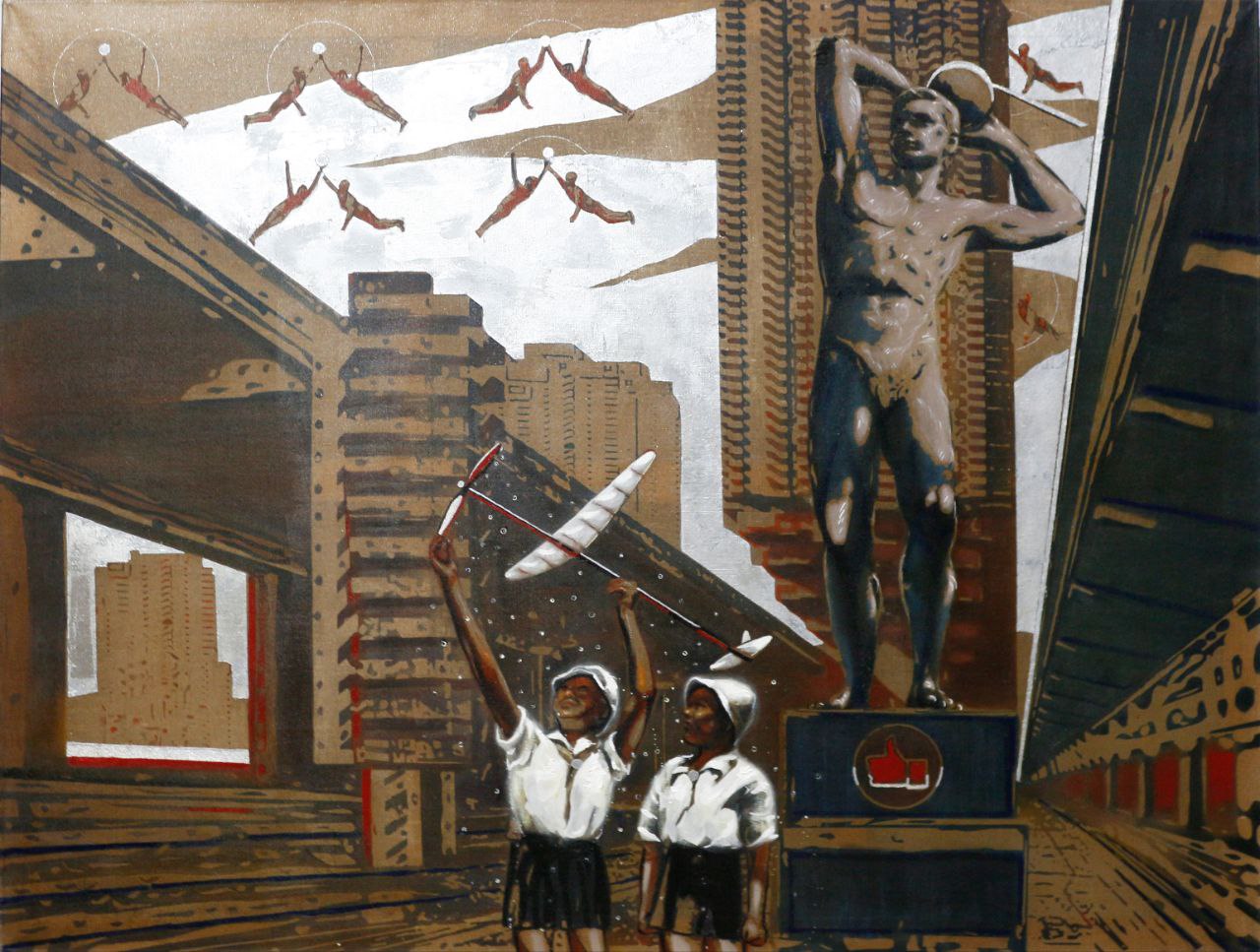On January 15 Erarta Galleriy in St.Petersburg will open the exhibition “Line”
Protogenes immediately identified the stranger by the perfect line that he’d drawn.
The painter Vladimir Comelfo presents his new project under the title “Line”. One might say, what can be easier for an artist than drawing a line. This obsolete myth is still relevant in the ordinary consciousness. But the question is deeper: to draw the line of the personal creative path, to mark the boundaries of the subject, to maintain its character. We find the ironic interpretation of the topic in Vladimir Comelfo’s novel “Hello, Zoinka, how are you?” (St. Petersburg, 2014). “I took a pencil, I’m drawing a line…/I’m drawing directly./ From left to right./It comes out well”. Self-irony is the prominent creative characteristic, manifested in the new project. But line is often the plot of the myth. We immediately recall the line of Apelles, the line of fortune, the horizon line, the lifeline, the twisted natural and the straight geometrical lines. Hippasus from Metaponto unveiled the secret of rationality, proving that only irrational numbers can build a regular dodecahedron as a true visualization of the Universe. This is why the Pythagoreans banished him, or even killed according to another version. Comelfo takes the opposite way - he rationalizes the irrational, abandoning the geometric concept of line as a material boundary. The artist offers us the reading code for the whole exhibition, and at the same time he raises such questions as what a line is, how it is related to the line of fortune and the line of personal creativity. This all (whether the author is aware or not) raises metaphysical questions and the eternal question with no discounts on the non-rational interpretation of creativity. The artist should think in terms of lines, colors, equilibrium or disharmonious spots; and just as him standing in front of the canvas, we are now stepping in his shoes. The thesis “Meditate with the film” (Deleuze), easily extrapolates to “Meditate with the painting”. Consequently this particular exhibition provokes me to think about the image construction. Image has always been the manifestation of supreme forces; there were no border between the depicted and the way of depicting. Now it’s more and more considered as something man-made. But, up to the modern history, the classical painting did not allow any stitches or glue lines. The line used to connect. As Leonardo da Vinci testified: “The boundary of a thing is a surface, which is not part of the body”. The twentieth century discovered separating, excluding and integrity opposite lines. Today we realize the shortage of authenticity, slow contemplation of a natural — indirect — landscape line, as it required by the terms of the visual environment, personal communication, atmosphere of meetings of friends and rivals, connoisseurs and appraisers.
The artist’s creative motto — “be true to yourself” no matter in poetry, football, fellowship, prose, or painting – acquires a special significance, refusing the rigor of genre self-realization: his poetry and prose features his “picturesque” drawing, and drawing reveals the nervous rhythm of his verses, exposed to illusory and elusive of the author’s soul.
The linear nature of V. Comelfo’s works is formally declared in the exhibition and emphasized by the display and the sizes: all works are 70 cm high and from 40 to 270 cm wide. The artist’s ethos can be described as ‘ironic romanticism’. The exhibition contains shaded abstract compositions, deliberately trivial still lives, characteristic portraits, ironic self-portrait, many-figured original composition, and genre paintings. Appeal to the classical genre of still life usually implicates self-irony, even though the sophisticated analytics yet perceive the fried eggs, beer bottles and glasses on the table metaphysically. The many-figured works are different. They are independent in space and subject; they are portals for travelling to different worlds inside one painting.
By the merit of the author the exhibition presents the embodiment of a mature concept. So “Spies” features both the acknowledged genii (Rublev, El Greco, Rembrandt), the modern master Picasso, and the contemporary expressionist Valery Lukka. As a demiurge Comelfo names portraits, things, and paintings, thus abandoning transgression of determinancy that invaded the art world in the late XX–early XXI century and twisted the ironic and the serious, the personal and the universal, the high and the low to the uttermost. The viewer is offered a mirror that reflects the artist’s predecessors, contemporaries, and himself. It suggests us the way of perception, however we are suspicious and, being well educated by lessons of post-structuralism, analytically notice the contexture of interreflections and dramatic dialogues. Let’s try to answer the question if there is anything else that the great artists look at except for their eccentric, beloved, passionate, or cold muses? But perhaps we are facing a patient paternalistic protest against the well-known diagnosis: painting is dead, there is nothing artist can create with the classical language of art, and neither can viewer appreciate it. The words by the Apostle Paul are highly applicable to the current situation in painting: “As unknown, and yet well known; as dying, and behold, we live; as punished, and not killed”.
But it is known that in a situation of peace, prosperity and confident consumption progress the most relevant strategies are the ones cultivating chaos, destruction and self-destruction. As the French avant-garde writer and essayist Jean Paulhan used to manifest: “Instead of express-indignation at Terror's methods and means, perhaps we ought to admire its wisdom. A rather simplistic and crude wisdom”. In the time of chaos and violence, terror and war the terrorist and shocking art strategies devalue and give way to coreflection, order and sincerity. Do we have a ground to suspect the artist of arrogance and esoteric art concept since he speaks to the famous artists who at their turn contemplate his artworks? Isn’t it homage to the modern transformation of fine arts into a luxury and elitist product.
Being an opponent of the radical artists thirsty for excess, scandal, provocation, and media, Comelfo is interested in existential dialogue, extending the line of traditions, preservation of classical forms and life-giving catharsis. Line is a ghost of a point in motion. It’s not the point, the utmost incorporeal determinancy, that can be seized, but its material phantom track. Perhaps this is why we come to such exhibitions — in order to see the invisible, to penetrate into idea, to meet the predecessors, to find the original, to step back in disbelief, to give a smile to a visual joke, and to get a designer catalogue.
Valery Savchuk

